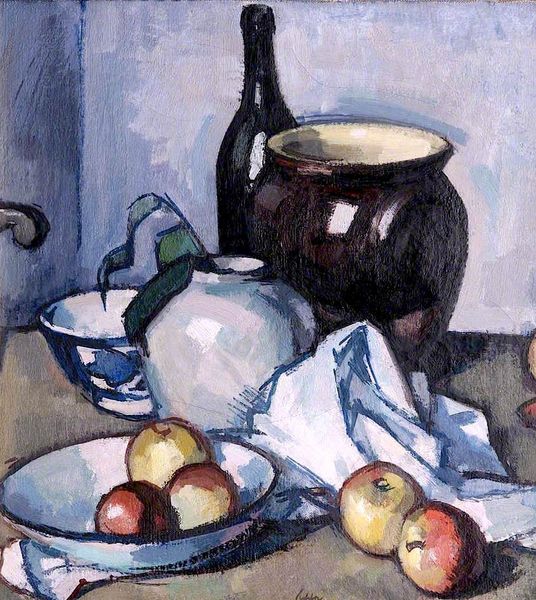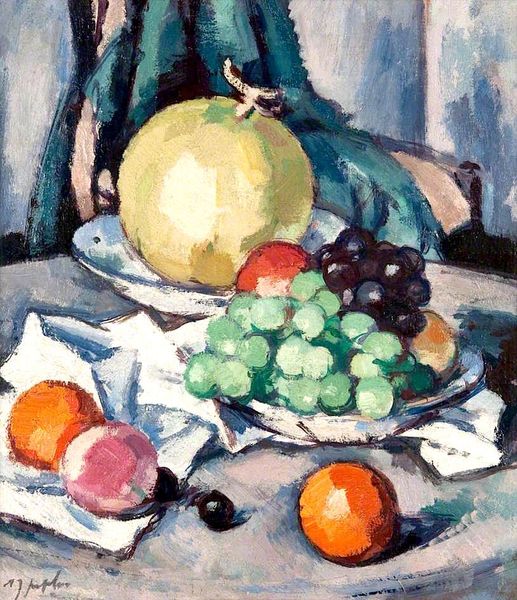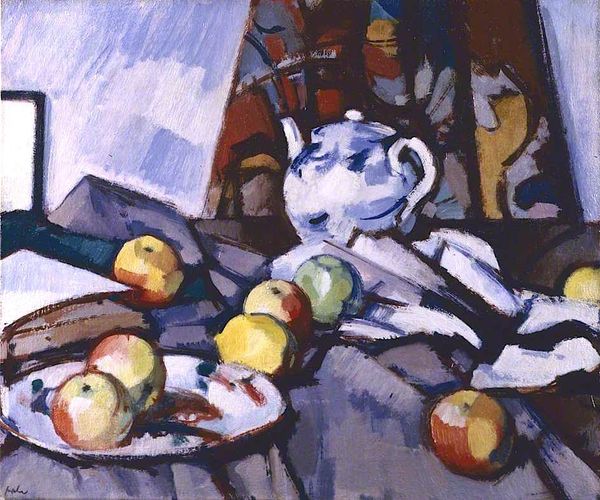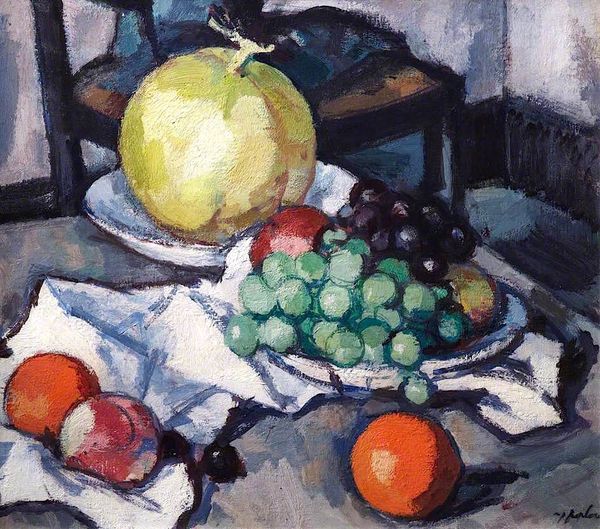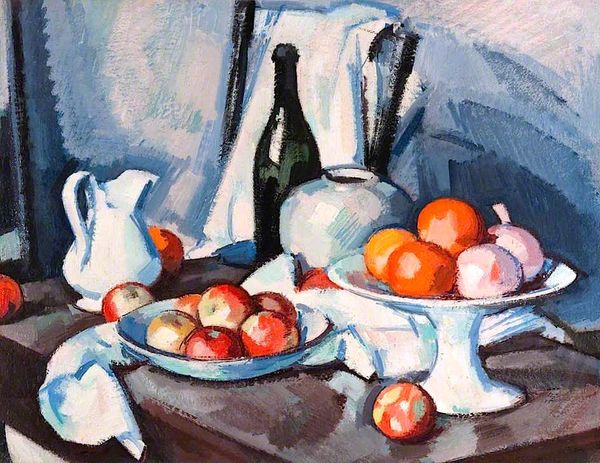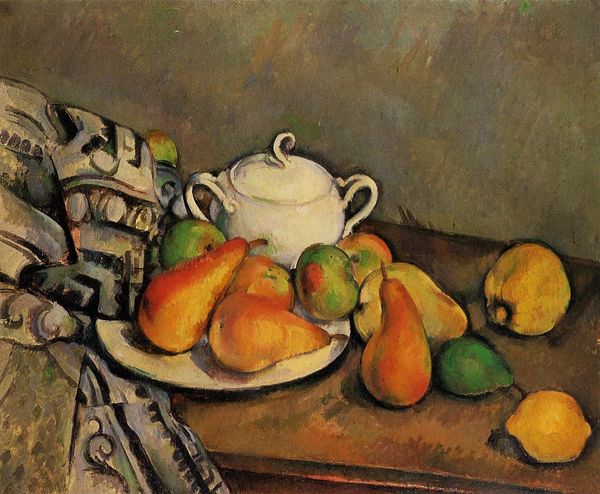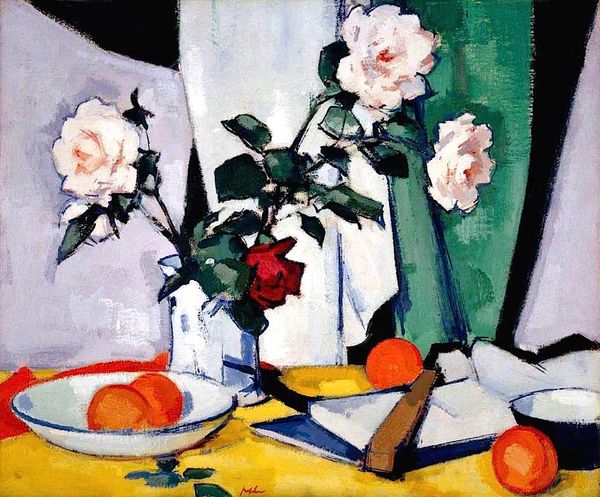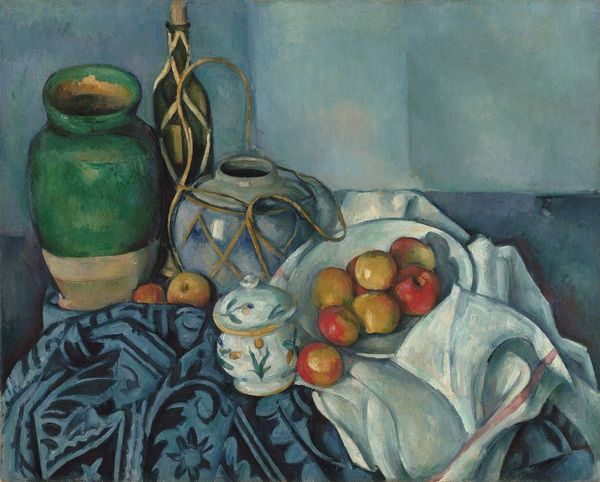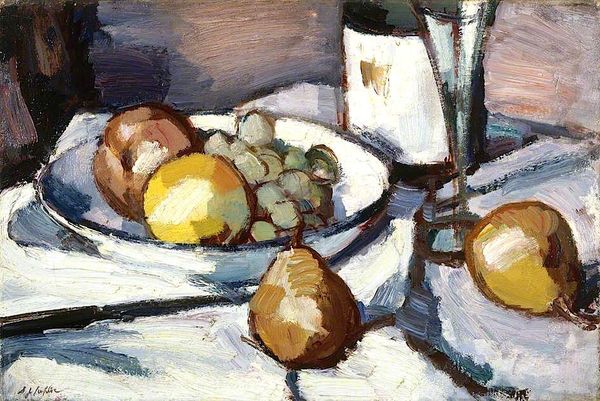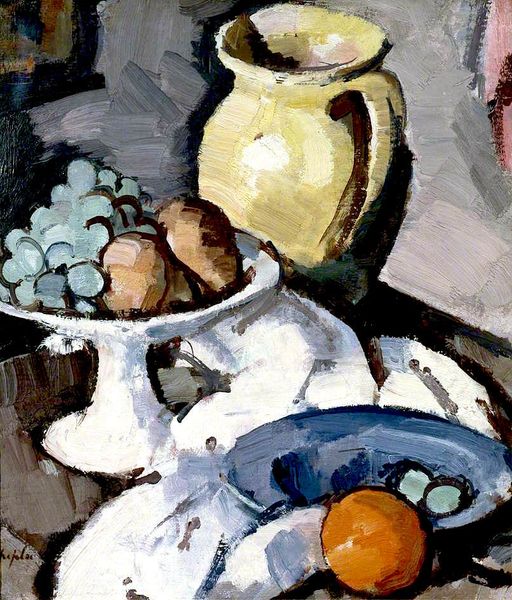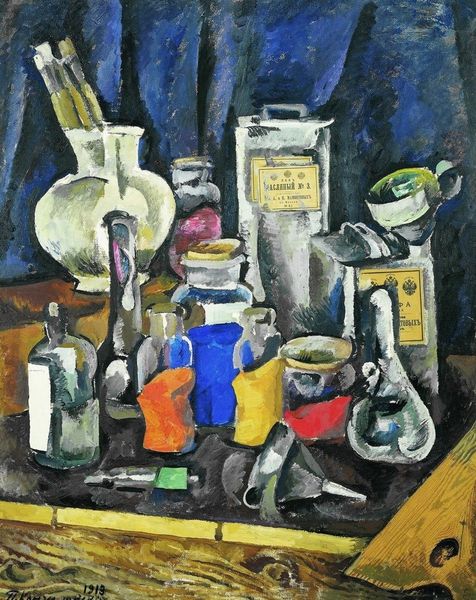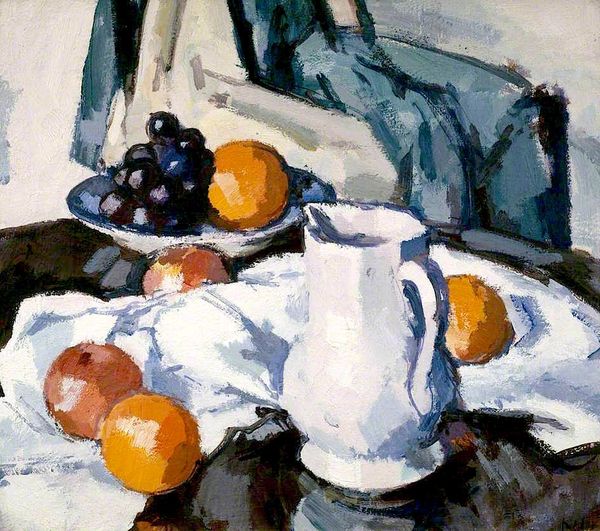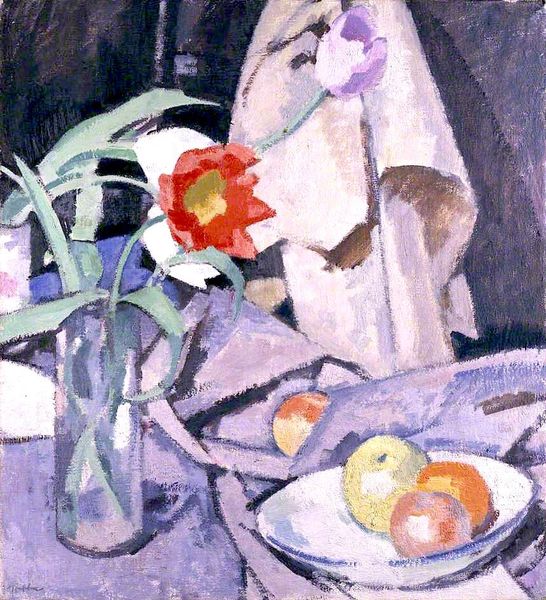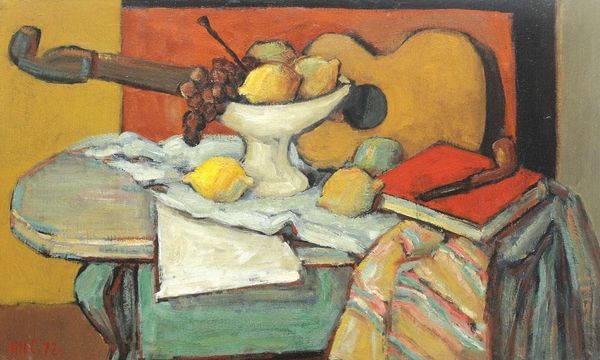
painting, oil-paint, impasto
#
painting
#
oil-paint
#
form
#
impasto
#
acrylic on canvas
#
scottish-colorists
#
painting art
#
post-impressionism
#
modernism
Copyright: Public domain
Curator: Standing before us is Samuel Peploe’s "Still Life," rendered with the confident brushstrokes characteristic of the Scottish Colourists. Editor: My initial impression? Energy. The vibrant palette and impasto create an immediacy; the objects almost vibrate on the canvas. Curator: Indeed. Peploe was deeply invested in form. Notice how the basic shapes—spheres, cylinders— are stylized but immediately recognizable. There is no date for the making of this "Still Life", though. Editor: Exactly! The geometry offers a certain solidity. I notice, too, how the dark outlines that encircle each form are used—almost like lead in stained glass—defining the boundaries and enhancing the color intensity. What kind of symbolic tradition do you read into still lifes? Curator: Well, historically, still lifes often served as memento mori—reminders of mortality. Though I'm less convinced of that specific weight here, though I’m sure one could find some allusion of vanity embedded, as we might view such displays of middle-class tastes. The domestic setting evokes ideas about stability, family life and quiet contemplation, no? Editor: Possibly, though it could easily represent a rupture to more conservative traditions. While there are elements of stability, to me, the composition creates an overall visual tension. That stark knife is suggestive of threat, and not just cutting an apple. Curator: An interesting observation! It serves perhaps not as just an image of everyday life but as something emotionally provocative? Regardless of how we respond to it, Peploe undeniably captured something enduring about seeing. Editor: And perhaps what still lifes tell us about the artist: about the artist's way of interpreting form through their psychological projections into otherwise mundane objects. What do we make of the artist when faced with such everyday life, and rendered here so compellingly? Curator: Ultimately, Peploe invites us into a conversation with the canvas, allowing the paint and color to lead the way to our own, personalized reflections on what is there—and perhaps more powerfully, what is not. Editor: Precisely! Leaving the viewer room to consider the psychological potential residing inside ordinary shapes and scenes; what else could art possibly hope to accomplish?
Comments
No comments
Be the first to comment and join the conversation on the ultimate creative platform.
